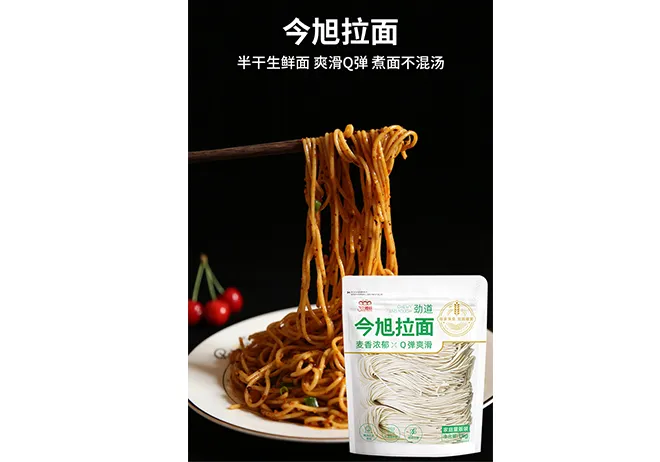Exploring Different Varieties of Soba Noodles and Their Unique Characteristics
A Comprehensive Guide to Soba Noodle Types
Soba noodles, a beloved staple of Japanese cuisine, hold a special place in the hearts and palates of food enthusiasts around the world. Made primarily from buckwheat flour, these noodles are celebrated for their unique flavor, versatile nature, and health benefits. While there are various types of soba noodles, each with its own characteristics and uses, understanding these distinctions can enhance your culinary experiences and appreciation for this traditional food.
1. 100% Buckwheat Soba (Juwari Soba)
The purest form of soba noodles is known as Juawari Soba. Made entirely from buckwheat flour, these noodles are gluten-free and have a nutty flavor profile that sets them apart. The texture is slightly more delicate compared to other types, and they are best enjoyed in a simple broth or as a cold dish with dipping sauce (zaru soba). Because of their lack of gluten, these noodles require a skilled hand to knead and cut properly, making them a culinary specialty that is often found in traditional soba shops.
2. Buckwheat and Wheat Soba (Hikiwasure Soba)
Many soba noodles you encounter in restaurants are a blend of buckwheat and wheat flour, often labeled as Hikiwasure Soba. This hybrid contains a lower percentage of buckwheat flour—typically around 70% buckwheat to 30% wheat. The addition of wheat flour gives the noodles greater elasticity and makes them easier to work with in terms of kneading and shaping. This type of soba is favored for its chewy texture, which holds up well in soups and stir-fries. It is a versatile option that can be enjoyed in various dishes, from hot soba soup to cold preparations.
A popular way to serve soba during the hot summer months is in the form of Zaru Soba. This style features chilled soba noodles that are served on a bamboo mat (zaru) alongside a cold dipping sauce called tsuyu. Diners can enjoy the noodles by dipping them into the sauce, often garnished with chopped green onions, wasabi, or grated daikon radish. Zaru Soba is refreshing and light, making it a perfect dish for warm weather. The flavor profile of the noodles is typically enhanced by the umami notes of the dipping sauce, making it a delightful culinary experience.
soba noodle types

4. Soba Salad (Soba Salad Bowl)
An innovative and modern take on traditional soba is the Soba Salad. This dish incorporates soba noodles into a vibrant salad, tossed with fresh vegetables, protein sources like shrimp or tofu, and dressings that can vary from sesame to soy-based. The nutty flavor of soba pairs exceptionally well with crunchy greens, creating a nutritional powerhouse that is both satisfying and healthy. Soba Salad is perfect for those seeking a balanced meal that is quick to prepare and beautiful to present.
5. Soba in Soup (Soba Noodle Soup)
Another traditional preparation of soba is in a hearty soup. Whether served in a clear broth or a more robust ramen-style soup, soba noodles absorb flavors beautifully, making them a wonderful vehicle for various ingredients. Common additions include tempura, mushrooms, and green onions. A warm bowl of soba noodle soup can be both comforting and nutritious, perfect for cozy evenings or casual gatherings.
6. Soba with Seasonal Ingredients (Kinmedai Soba)
In Japanese cuisine, seasonal ingredients play an important role, and soba is no exception. Dishes like Kinmedai Soba feature soba noodles served with fresh fish or vegetables that are currently in season, enhancing the dining experience with vibrant flavors. This approach not only showcases the quality of the ingredients but also emphasizes the connection to nature prevalent in Japanese cooking.
Conclusion
Soba noodles, with their rich history and cultural significance, are more than just a culinary indulgence; they represent a journey through flavors, textures, and traditions. Whether you opt for the pure essence of Juawari Soba or the diverse creations like Soba Salad, there's a soba noodle type for everyone to enjoy. Exploring these different varieties not only enriches our understanding of Japanese cuisine but also opens the door to countless delicious dining experiences. So the next time you find yourself wandering through a noodle shop or considering a home-cooked meal, don’t hesitate to venture into the world of soba noodles!
-
Unleash Your Inner Chef with Delectable Italian Pasta CreationsNewsAug.01,2025
-
Savor Health and Flavor: Irresistible Soba Noodles for Sale Await!NewsAug.01,2025
-
Nourish Your Body with Premium Organic Ramen - A Culinary Delight AwaitsNewsAug.01,2025
-
Elevate Your Dishes with Our Exquisite Kinds of Egg NoodlesNewsAug.01,2025
-
Dive into Flavorful Convenience with Our Ramen OfferingsNewsAug.01,2025
-
Discover Exquisite Types of Naengmyeon and Chilled Soba NoodlesNewsAug.01,2025
-
Is Whole Wheat Pasta Healthy?NewsMay.30,2025
Browse qua the following product new the we

















































































































